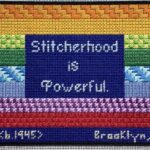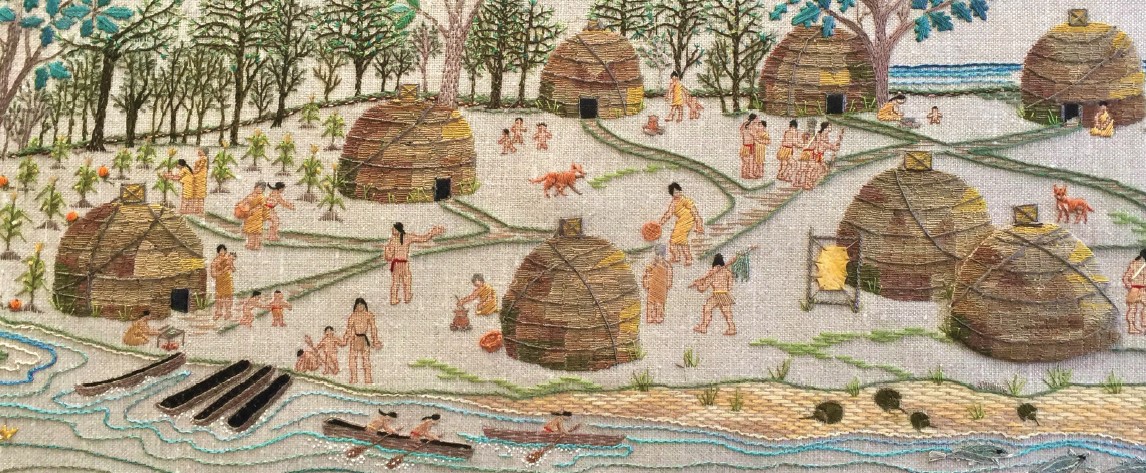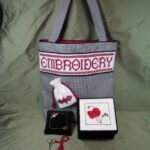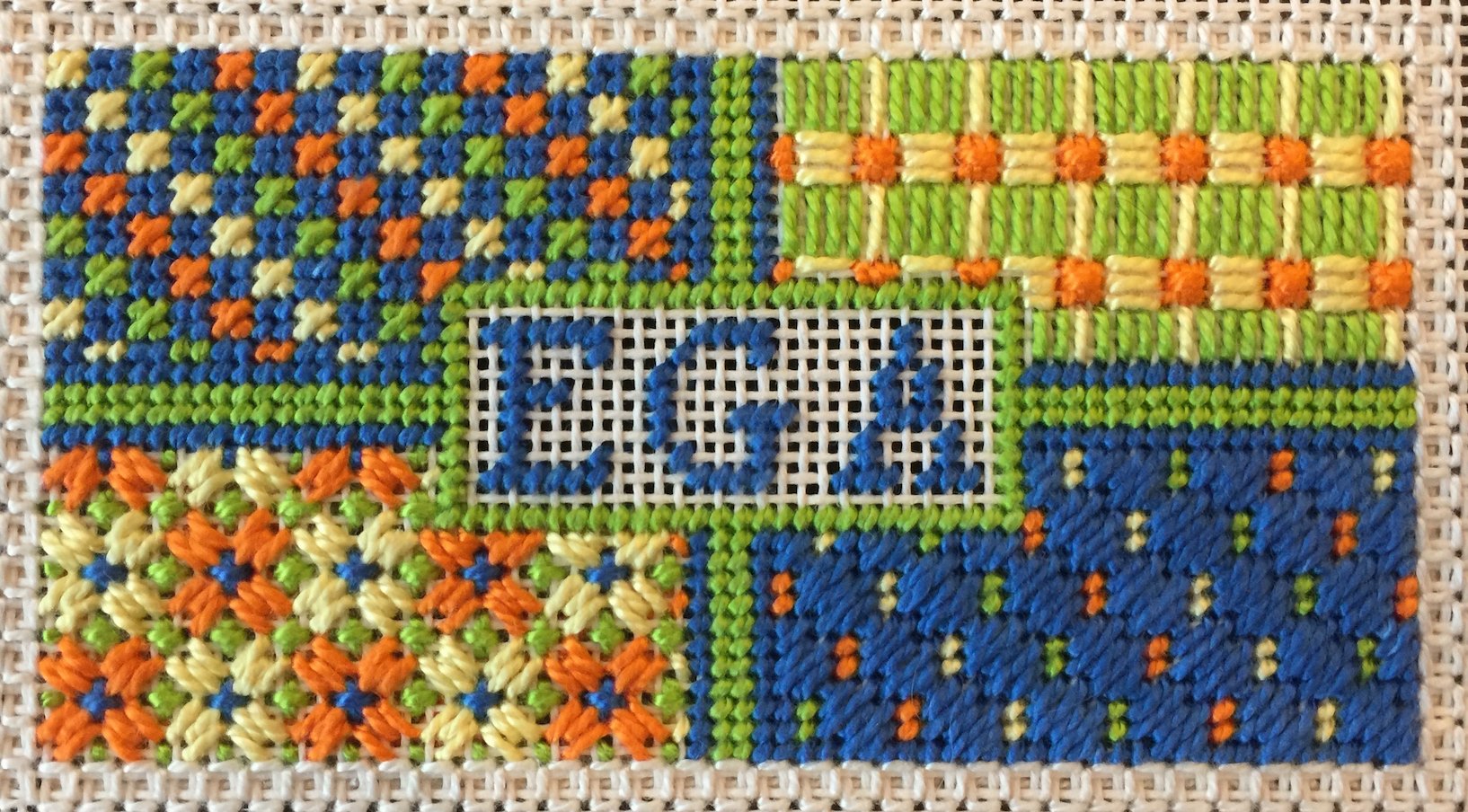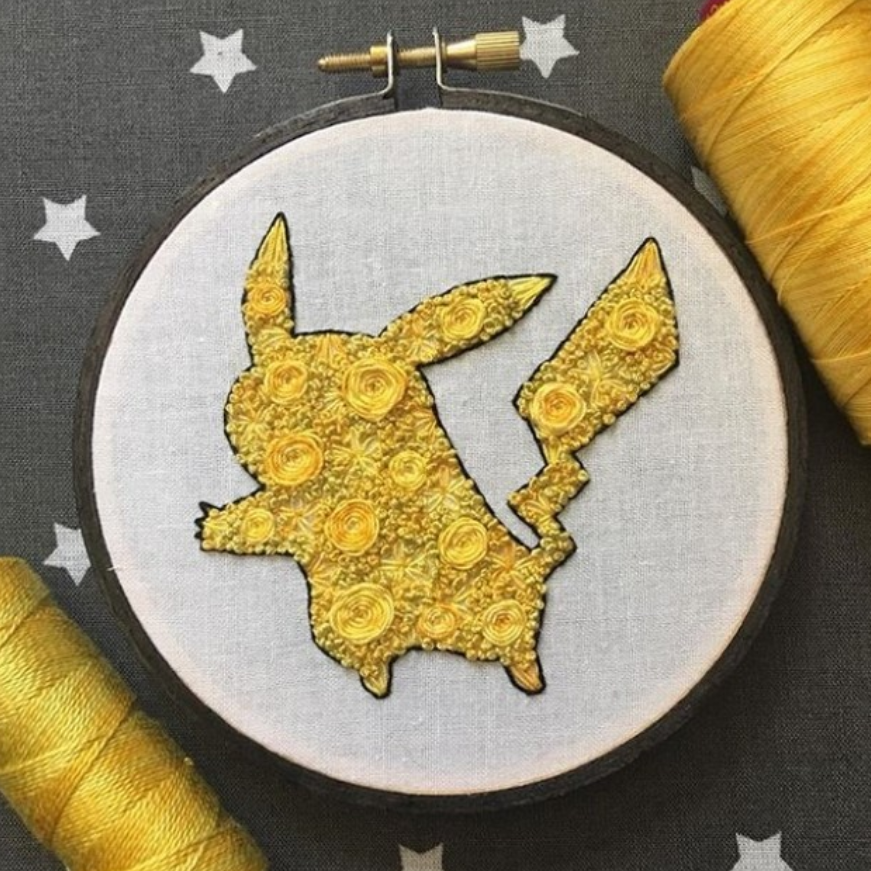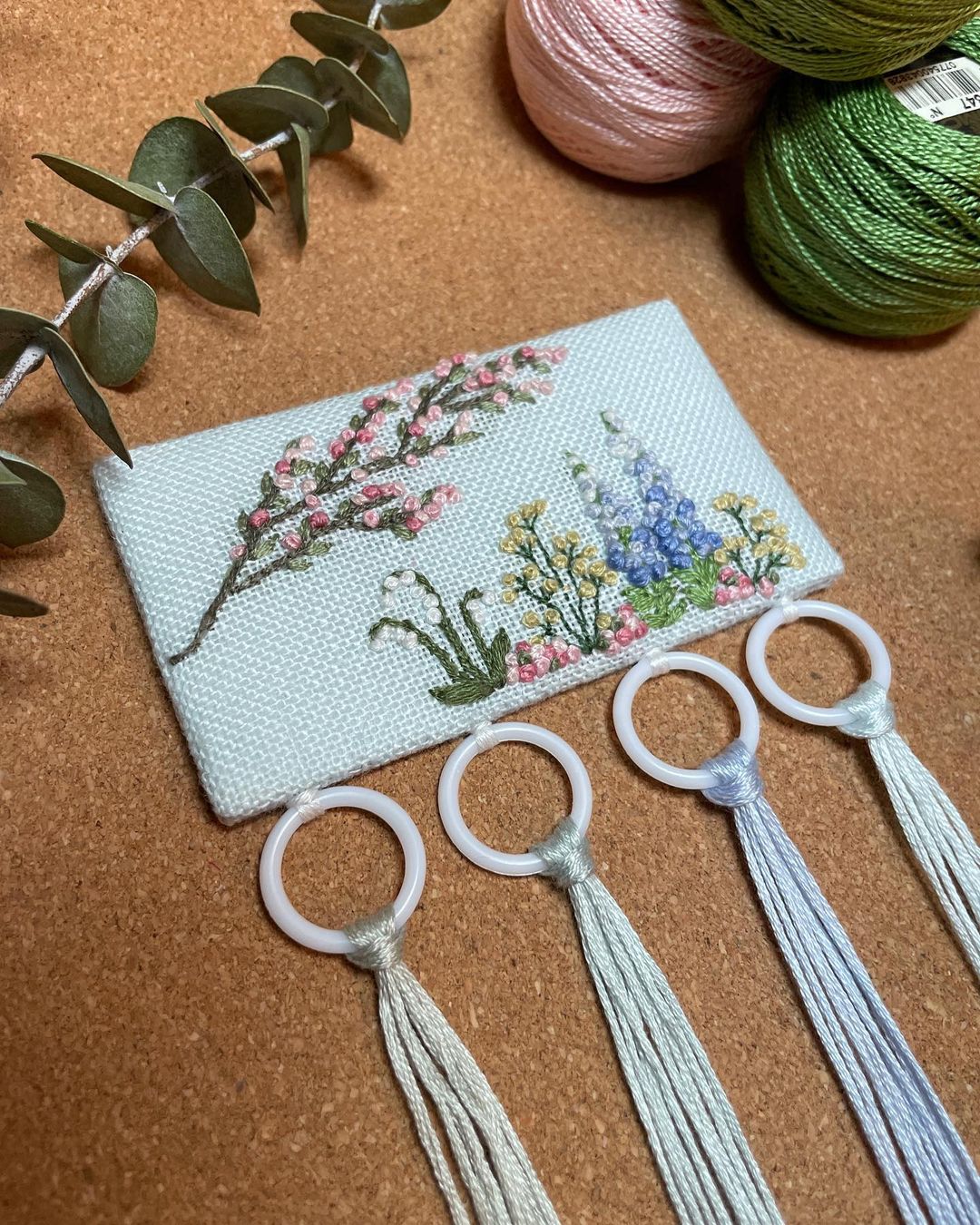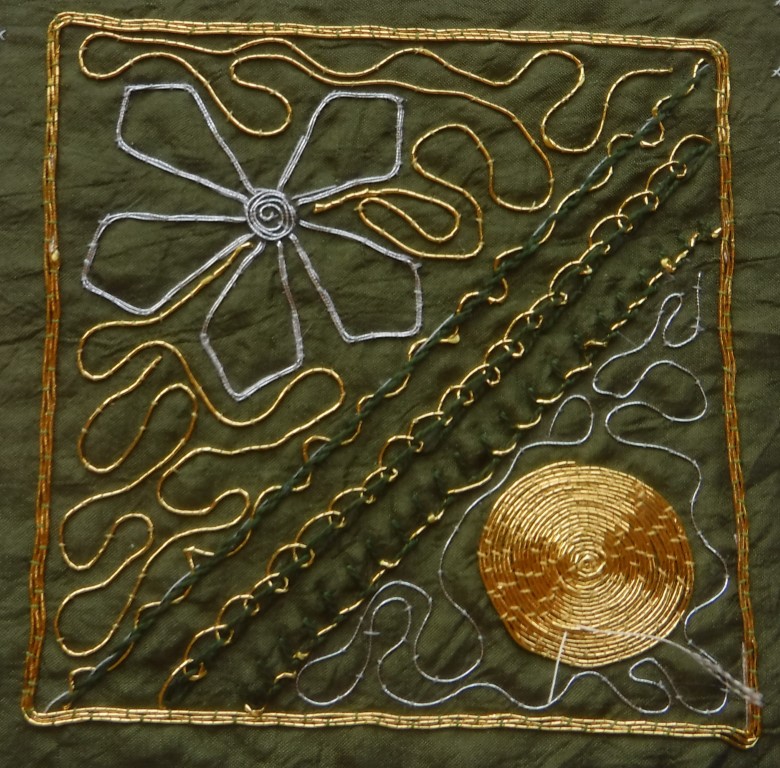From a rare sampler worked by a young African American girl made about 1820 to an intricately embroidered sweet bag and knife sheath that are said to have belonged to a lady-in-waiting to Queen Elizabeth I, nearly 30 works from 1660 to the present are on view in Embroidery: The Thread of History at Winterthur Museum, Garden & Library in Delaware. The exhibition explores the use of embroidery as historical documents that can deepen our understanding of women’s lives and considers how needlework has been used to remember the past, document the present, and look forward to the future. The exhibition will be on view in the Society of Winterthur Fellows Gallery from October 6, 2018, until January 6, 2019.
“Needlework is a crucially important area of study,” said Linda Eaton. The John L. & Marjorie P. McGraw Director of Collections and Senior Curator of Textiles. “Samplers and silkwork pictures often document the lives of their makers by celebrating their families or providing evidence of the places and times they lived in, so needlework can provide evidence of lives of women who might otherwise have remained unknown.”
Needlework can document world of the maker, such as A View of New York, a watercolor and silk on silk piece dated 1807 worked by Mary Bowen while she was a student at Haerlem Boarding School in Harlem, New York—a quiet country village at the time—which depicts lower Manhattan as seen from Brooklyn near where the famous bridge now stands. A sampler worked by Sarah Ann Major Harris from 1822 through 1828 documents the importance of embroidery as part of the education of young African-American girls. Harris, an important figure in the movement to abolish slavery, was the first African American student at Prudence Crandall’s school in Canterbury, Connecticut–a circumstance that led to enactment of Connecticut’s infamous Black Law against educating black children from out of state. The future of needlework is represented by a magnificent embroidered casket and toys by Janet Carija Brandt. Her Once Upon a Time: The World of Possibilities, inspired by beautiful embroidered boxes from the 1600s, incorporates ideas, motifs, materials, and techniques from that time to make something totally new. It is a tour de force of both design and technique.
Among the works, visitors will also see packets of needles made in the famous needle-making capital of Redditch, England, and a beautiful sampler made in Delaware in 1807 that has been carefully conserved by one of the students in the Winterthur/University of Delaware Program in Art Conservation.
In addition to the exhibition, Winterthur will host a conference, also entitled “Embroidery: The Thread of History” on October 19-20, 2018. Lectures will cover such topics as the materials used in accurate historic reproductions, the use of historic samplers as legal documents, the rise and fall of Scotland’s famed Ayrshire whitework of the 19th century, and more. Lectures include “Material Witness: Evidence in Embroideries” by Virginia Whelan, a textile conservator from Filaments Conservation Studio in Merion Station, Pennsylvania; and “The Price of Beauty: Embroidery in Louis XIV’s Versailles,” by Joan DeJean, Trustee Professor form the University of Pennsylvania, who will explain the lavish tastes of the Sun King, the enormous sums he paid to decorate his palace, and the result: some of the greatest embroidery of all time. Another highlight will be a lecture by Dr. Susan Kay-Williams, Chief Executive of the Royal School of Needlework at Hampton Palace in the United Kingdom. Her Fine and Beautiful: Historic Commissions from the RSN Studio will illustrate a variety of historic commissions, from wall-sized hangings to ecclesiastical vestments to sumptuous gowns worn for coronations and recent royal weddings. Stitchers of all abilities will enjoy workshops, where they can work both history and contemporary designs and learn a range of different techniques, tour Winterthur’s outstanding needlework collection, or take a field trip to the Delaware Historical Society.
Admission to the exhibition “Embroidery: The Thread of History” is free with regular Winterthur admission. Advance registration is required for the conference. The fee is $400 for Winterthur Members and nonprofit professionals, $455 for Nonmembers, and $200 for graduate students with ID and beginning professionals. The cost of workshop kits is not included. More information, please call 302.888.3883, or visit Winterthur.org/conferences.
Winterthur—known worldwide for its preeminent collection of American decorative arts, naturalistic gardens, and research library for the study of American art and material culture—offers a variety of tours, exhibitions, programs, and activities throughout the year. General admission includes a tour of some of the most notable spaces in the 175-room house as well as access to the Winterthur Garden and Galleries, special exhibitions, a narrated tram tour (weather permitting), the Campbell Collection of Soup Tureens, and the Enchanted Woods children’s garden. $20 adults; $18 for students and seniors; $5 for ages 2–11.
Museum hours are 10:00 am to 5:00 pm, Tuesday – Sunday. Winterthur, located on Route 52, six miles northwest of Wilmington, Delaware, and five miles south of U.S. Route 1, is closed on Mondays (except during Yuletide), Thanksgiving, and Christmas Day. Winterthur is committed to accessible programming for all. For information, including special services, call 800.448.3883, 302.888.4600, or TTY 302.888.4907, or visit http://winterthur.org/.
– Winterthur Museum, Garden & Library
